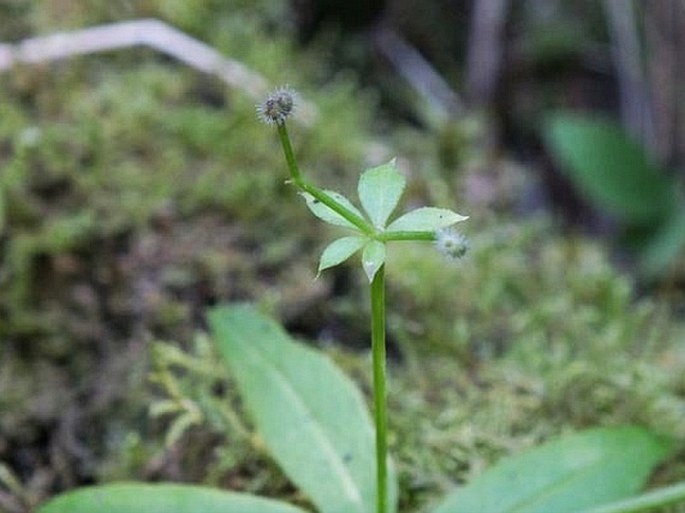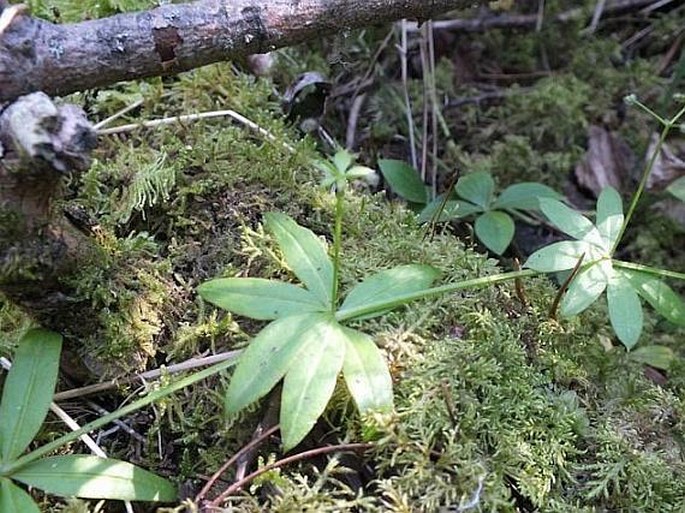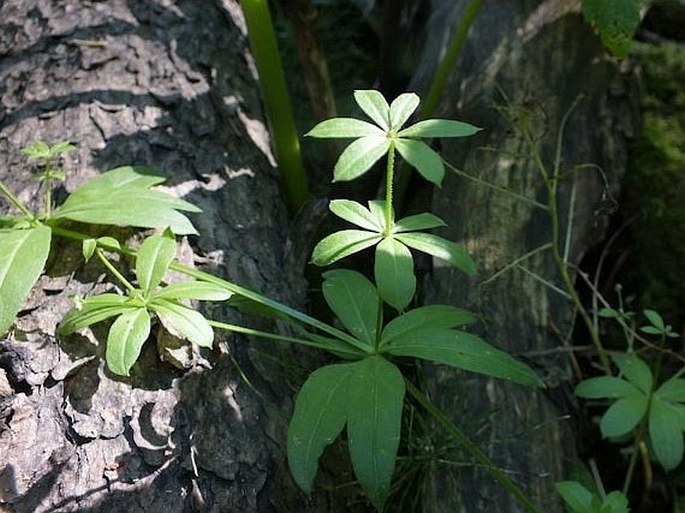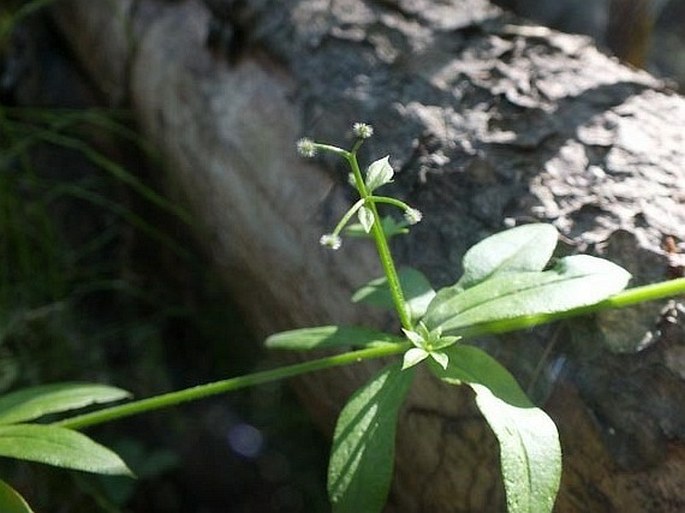Syn.: Asperula galioides Jacquem. ex Hook. f., Galium brachiatum Pursh, Galium bryophyllum Goldb. ex DC., Galium cuspidatum Muhl., Galium jalapense Schltdl., Galium longicaule Raf., Galium obovatum Schltdl. et Cham., Galium paridifolium Eschsch. ex Ledeb., Galium pennsylvanicum W. P. C. Barton, Galium suaveolens Wahlb.
Family: Rubiaceae Juss.

Distribution: Circumpolar. North America, all states of US, all provinces of Canada, Greenland, Siberia (Buryatia, Irkutsk, Novosibirsk, Tomsk, Tyumen), Russian Far East (Kamchatka, Khabarovsk, Kurile Islands, Primorye, Sakhalin), northern China (Heilongjiang, Jilin, Nei Monggol, Sichuan), Japan (Hokkaido, Honshu), northern Europe.
Ecology: Moist wooded areas, in elevations up to 2000 m. Blooms from June to August.
Description: Perennial herb with stems 30–100 cm long, weak, trailing, square, surface smooth to bristly-haired. Leaves in whorls of 5 to 6, oblong or lanceolate, 2–6 cm long tipped with a bristle, with a short stalk; sweet scented. Flowers in 3-flowered cyme, branched, growing from leaf axils. Flowers 2–4 mm across, white, tetramerous, with 1 pistil. Fruit is a nutlet, 2–3 mm across, borne in pairs, with hooked bristles on surface.
Note: Although Northern Bedstraw, Galium boreale is the most plentiful in North America and as such it had been used by early settlers for stuffing their sleeping matrasses, the common name Bedstraw is used for all Galiums.



These images were taken in Canada, Alberta, Bragg Creek (August 2013).


